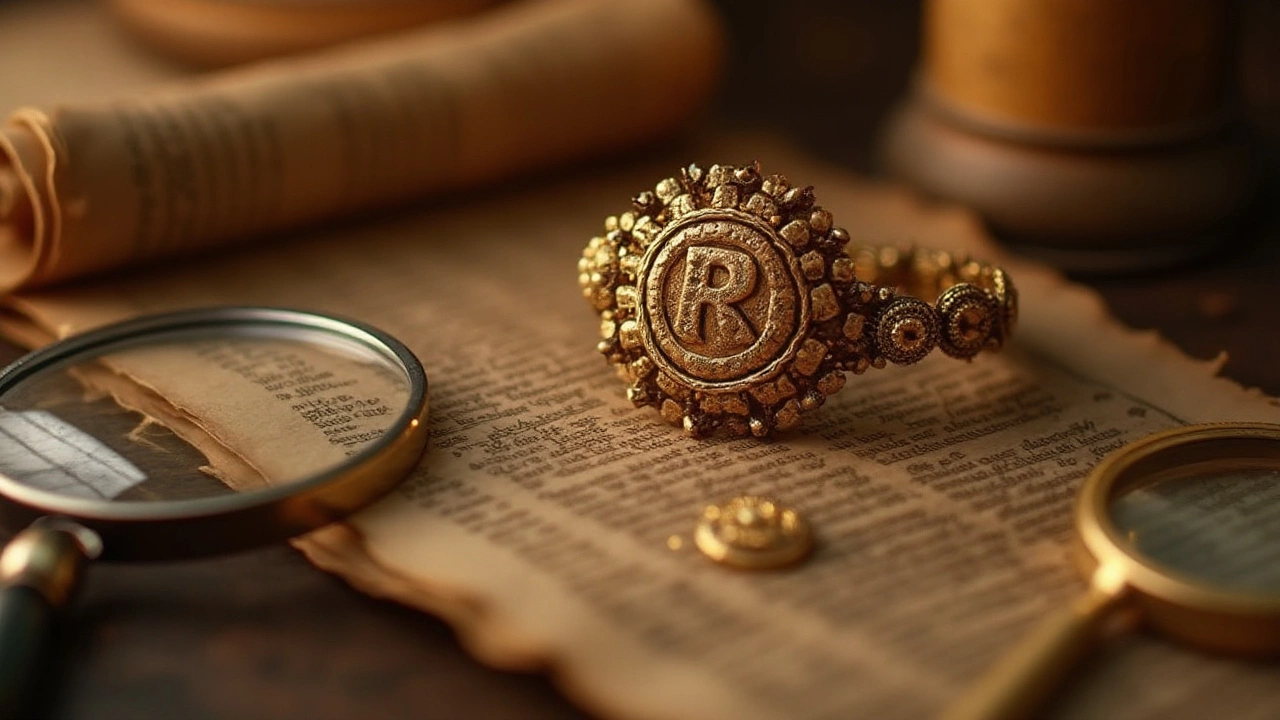Jewelry Markings – Your Quick Guide to Decoding Gold and Diamond Stamps
When you pick up a piece of jewelry markings, the tiny symbols on the metal are more than just decoration. They tell you who made it, what it’s made of, and whether it’s genuine. Jewelry markings, a set of stamps, numbers, or letters stamped on a piece of jewelry. Also known as hallmarks, these marks help buyers verify authenticity, assess value, and understand care requirements.
One of the most common groups you’ll see is gold hallmarks, official stamps that indicate the gold purity, the maker’s identity, and the assay office. In India, you’ll often find a triangle or a circle with a numeric code, followed by a numeric purity figure like 22 or 18. These hallmarks are required by law and give you a quick way to confirm that the gold isn’t just plated.
Another key identifier is the 750 stamp, a hallmark that signifies 75% pure gold, also known as 18‑karat gold. When you see “750” on a ring or pendant, it means the piece contains 18 parts gold and 6 parts other metals, which balances durability with the rich gold color. This stamp is especially common on contemporary designs that need extra strength for everyday wear.
Beyond the 750, you’ll encounter other purity markings like 916 (22K) or 999 (24K). These numbers tell you the exact proportion of gold, and they’re often paired with the maker’s logo. Understanding that a 916 piece is 91.6% gold helps you compare value across different items—higher purity usually means a higher price but also a softer metal, which can affect how you wear it.
When the jewelry contains diamonds, the marks shift focus to grading. Look for a diamond grading stamp, a tiny inscription indicating the diamond’s cut, color, clarity, and carat weight. In many cases you’ll see a laser‑etched GIA or IGI logo, followed by a series of letters and numbers. Those details help you confirm the diamond’s quality without sending it to a lab again.
Reading these markings isn’t just for collectors; it’s a practical skill for any shopper. A genuine hallmark links the piece to a recognized assay office, which means the seller can trace its origin. In contrast, missing or blurry stamps often signal a counterfeit or a piece that’s been re‑hallmarked to look more valuable.
Regional differences matter, too. Indian hallmarks follow the BIS (Bureau of Indian Standards) system, which includes a three‑digit number for the assay office and a two‑digit code for the metal purity. In the US, you might see “18K” or “925” for sterling silver, while European pieces often bear the “AU” symbol with a purity figure. Knowing these variations saves you from confusion when you shop online or travel.
Fake marks are a real problem, especially on high‑demand items like gold necklaces and diamond earrings. Some sellers stamp a random 750 or a fake GIA logo to inflate the price. The best defense is to compare the stamp’s font, depth, and location with known authentic examples. If the marking looks shallow or the letters are uneven, that’s a red flag.
Here’s a quick checklist for your next purchase: 1) Verify the hallmark matches the country’s standard, 2) Check the purity number aligns with the metal’s color and weight, 3) Look for a certified diamond grading stamp if gems are present, 4) Examine the stamp’s quality—real marks are crisp and deep, 5) Ask the seller for a hallmarks certificate if you’re unsure. Following these steps lets you buy with confidence and avoid costly mistakes.
Now that you’ve got the basics of gold hallmarks, 750 stamps, purity numbers, and diamond grading under your belt, you’ll find the articles below a breeze to navigate. Each piece dives deeper into specific aspects—whether you’re comparing Indian and international standards, spotting fake stamps, or learning how to care for marked jewelry. Keep reading to sharpen your knowledge and make smarter buying decisions.

